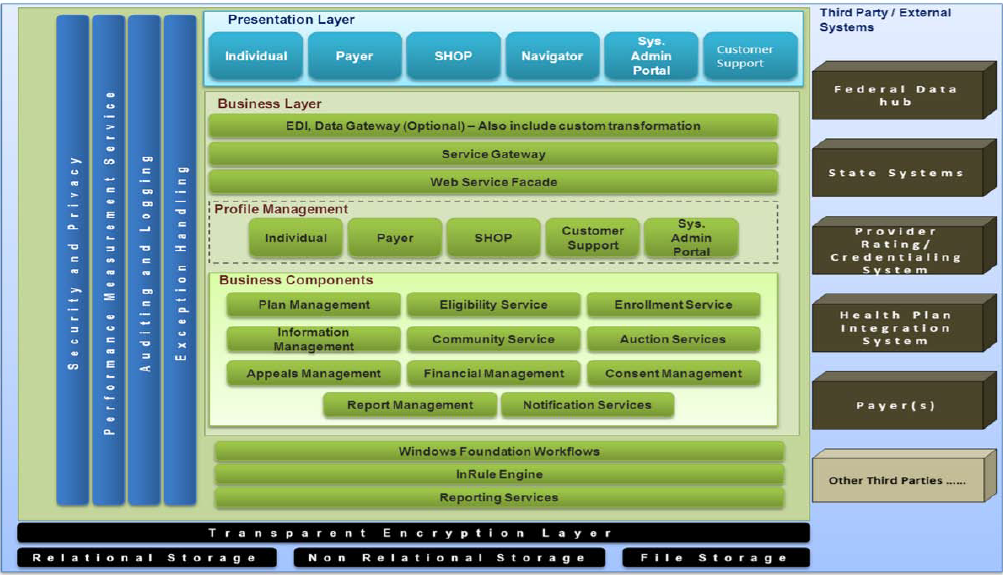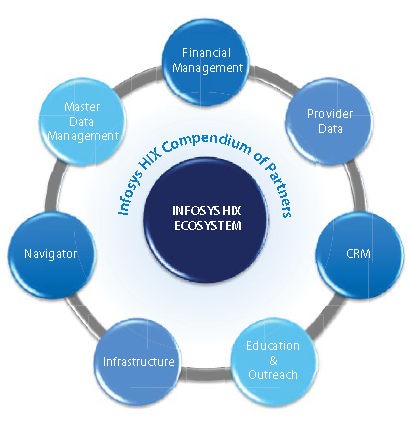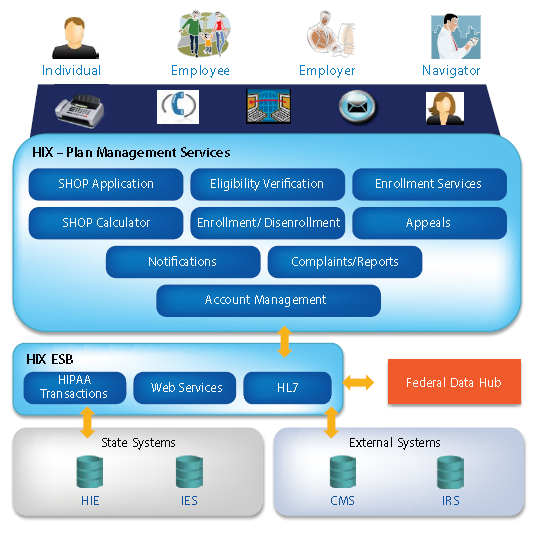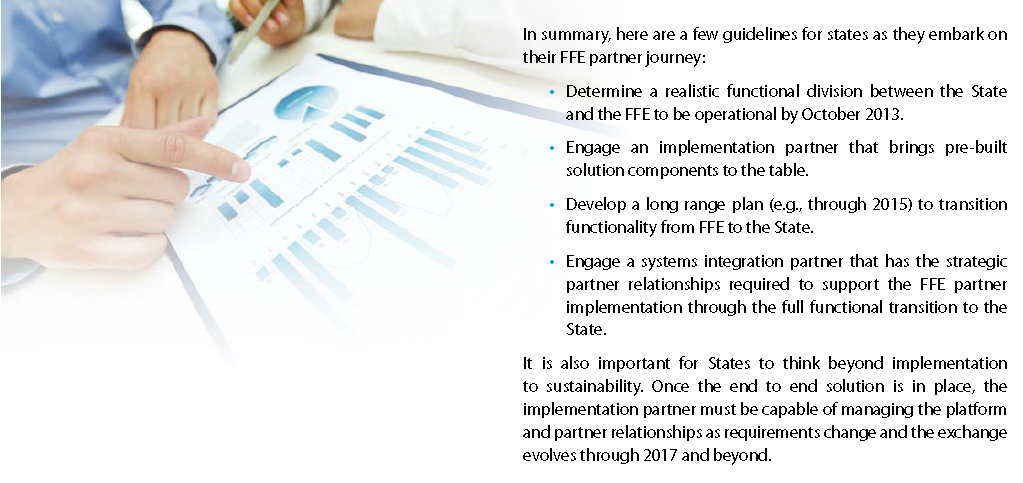Difference between revisions of "HIX (Health Insurance Exchange"
| Line 1: | Line 1: | ||
== Introduction HIX == | == Introduction HIX == | ||
| + | |||
[[image:HIX_2.png]] | [[image:HIX_2.png]] | ||
| + | |||
There is no single right answer to this question. Certain states, specifically Delaware, Illinois, Arkansas(Kaiser Family Foundation, September 14, 2012), have recognized that having their own exchange operation in 2013 is unrealistic and reliance on the FFE for some functionality on an interim basis is required. Their experience provides some guidance to states that are in a similar situation. The division of exchange functions between the State and the FFE will vary. In general, responsibilities break down as follows: | There is no single right answer to this question. Certain states, specifically Delaware, Illinois, Arkansas(Kaiser Family Foundation, September 14, 2012), have recognized that having their own exchange operation in 2013 is unrealistic and reliance on the FFE for some functionality on an interim basis is required. Their experience provides some guidance to states that are in a similar situation. The division of exchange functions between the State and the FFE will vary. In general, responsibilities break down as follows: | ||
| Line 12: | Line 14: | ||
== Principal Components of HIX == | == Principal Components of HIX == | ||
| + | |||
[[image:HIX_3.png]] | [[image:HIX_3.png]] | ||
| + | |||
== Example of a Modular Solution == | == Example of a Modular Solution == | ||
| Line 20: | Line 24: | ||
[[image:HIX_4.png]] | [[image:HIX_4.png]] | ||
| + | |||
== Implementation plan == | == Implementation plan == | ||
| + | |||
Given the time contraints, most states that have not started building their exchange will have to adopt a hybrid model at the outset. Many if not most will look to migrate from a hybrid to a standalone exchange between now and 2015. The implementation plan should be structured such that it accounts for this transition of functionality from the FFE to the State. | Given the time contraints, most states that have not started building their exchange will have to adopt a hybrid model at the outset. Many if not most will look to migrate from a hybrid to a standalone exchange between now and 2015. The implementation plan should be structured such that it accounts for this transition of functionality from the FFE to the State. | ||
[[image:HIX_5.png]] | [[image:HIX_5.png]] | ||
| + | |||
| + | |||
| + | == Summary == | ||
| + | |||
| + | |||
| + | [[image:HIX_6.png]] | ||
Revision as of 17:00, 5 November 2013
Introduction HIX
There is no single right answer to this question. Certain states, specifically Delaware, Illinois, Arkansas(Kaiser Family Foundation, September 14, 2012), have recognized that having their own exchange operation in 2013 is unrealistic and reliance on the FFE for some functionality on an interim basis is required. Their experience provides some guidance to states that are in a similar situation. The division of exchange functions between the State and the FFE will vary. In general, responsibilities break down as follows:
FFE - individual/navigator, SHOP, payer portal (presentation layer) with integrated eligibility verification, subsidy and credit calculations, and plan selection.
State - plan management, premium illing and financial reconciliation
The Divions of labor around many other functions like member outreach, call center, etc. need to be defined as wel. Assuming that a hybrid model is the likely defauls strategy for many States, what are the implementation steps? Whether a state is an early innovator or tabled a decision until after the election, no single vendor is able to provide a sole source end to end solution. As October 2013 approaches, states should be looking at a modular solution with as many pre-built components as possible. The specific modules required will depend on the functions assumed by the State Exchange vs. the FFE. In any case a system integrator with established partner relationships for critical niche functions is needed to assure that all the parts work together and connect appropriately with the FFE.
Principal Components of HIX
Example of a Modular Solution
Let's look at a real example in a modular solution that was recomended to the states planning to implement a hybrid moedl, the functions that the State will assume are matched to Infosys solution partners. In this model, Infosys provides the platform that supports plan management. For example, we have fully integrated a financial partner into the platform for premium billing and reconciliation. Other partners have been engaged to provide broker management functionality, member outreac, etc.
Seamless integration between FFE and the State Exchange is particularly important in hybrid exchange models. Much of the State Exchange functionality depends on data connections with the FFE. Many of the functions retained by the State in a hybrid exchange- i.e. plan enrollment and premium billing- depend on accurate eligibility data from the FFE. Conversely, the FFE must have accurate plan and provider information to feed the member and eployer portals. It is the responsibility of the system integrator to build and assure the integrity of this EDI structure, as the high level functionality and data connections required for a typical hybrid exchange.
Implementation plan
Given the time contraints, most states that have not started building their exchange will have to adopt a hybrid model at the outset. Many if not most will look to migrate from a hybrid to a standalone exchange between now and 2015. The implementation plan should be structured such that it accounts for this transition of functionality from the FFE to the State.




